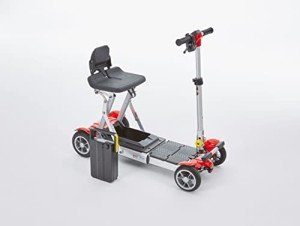Understanding Mobility Aids: Enhancing Independence and Quality of Life
As society continues to age and people progressively look for methods to maintain self-reliance, the need for mobility aids has actually never ever been more essential. Mobility aids, which include a range of devices created to help people with walking or moving around, play an essential role in promoting mobility, improving safety, and enhancing general lifestyle. This post will check out the various kinds of mobility aids, their benefits, considerations for choice, and address some regularly asked questions.
Types of Mobility Aids
Various mobility aids are available, each designed to deal with particular requirements. The following table sums up some of the most common kinds of mobility aids and their features.
| Type of Mobility Aid | Description | Best Suited For | Key Features |
|---|---|---|---|
| Canes | A handheld stick offering assistance and balance. | Individuals who require very little assistance. | Light-weight, portable, adjustable height. |
| Walkers | Four-legged frames providing stability. | Those needing considerable assistance while walking. | Foldable, some with wheels, included safety features. |
| Rollators | Wheeled walkers with a seat for resting. | People needing mobility with the choice to rest. | Brakes, baskets for individual items, adjustable height. |
| Wheelchairs | Chairs with wheels for people with restricted mobility. | Those not able to walk or needing extensive assistance. | Handbook or powered options, customizable seating. |
| Scooters | Motorized devices for bigger distances. | Individuals with minimal endurance however requiring independence. | Various sizes and styles, frequently easily transportable. |
| Crutches | Support devices put under the arms or lower arms. | Individuals recuperating from lower limb injuries. | Adjustable, lightweight, needs upper body strength. |
| Stairlifts | Mechanical devices for moving between floorings. | Users dealing with difficulties in multi-level homes. | Adjustable for different staircases, automated. |
Advantages of Mobility Aids
Mobility aids supply a variety of advantages that can substantially improve the lives of individuals dealing with mobility obstacles. Some significant advantages consist of:
- Increased Independence: Mobility aids empower individuals to move easily without depending on others for support, therefore enhancing their self-confidence and self-esteem.
- Boosted Safety: Using mobility aids can decrease the danger of falls and injuries, especially for older adults or those with balance issues.
- Enhanced Quality of Life: By facilitating mobility, people can take part in social activities, attend events, and delight in life more fully, contributing to better emotional and mental health.
- Rehab Support: After surgical treatment or injury, mobility aids offer required assistance and stability, assisting in recovery and rehab procedures.
- Availability: Many mobility aids are developed to be utilized both indoors and outdoors, ensuring that people can navigate various environments with ease.
Elements to Consider When Choosing Mobility Aids
Choosing the suitable mobility aid needs mindful consideration of several elements, including:
| Factor | Factors to consider |
|---|---|
| User's Needs | Evaluate the level of mobility needed; think about whether the user requires temporary or long-term support. |
| Physical Limitations | Evaluate the user's strength, balance, and coordination to figure out the very best type of help. |
| Setting | Think about the primary environments where the aid will be utilized, such as home, outdoors, or particular surfaces. |
| Weight and Portability | Make sure that the selected gadget is manageable relating to mobility and storage, specifically for outdoor use. |
| Budget | Mobility aids been available in a variety of costs; consider insurance protection and offered financing alternatives. |
| Adjustability | Select aids that can be changed for height and comfort to accommodate development or changing needs. |
Regularly Asked Questions About Mobility Aids
1. How do I know if I require a mobility help?
Many aspects can indicate the need for a mobility aid, such as trouble walking or stabilizing, fatigue while standing, or a recent surgery affecting mobility. Consulting with a health care expert can offer guidance customized to private requirements.
2. What types of mobility aids are covered by insurance coverage?
Coverage differs between insurance companies, but many supply alternatives for durable medical devices, which usually consists of wheelchairs, walkers, and some types of walking sticks. Talk to your insurance service provider for specific protection details.
3. Can mobility aids be utilized outdoors?
Yes, lots of modern-day mobility aids are designed for outside usage. Rollators, scooters, and some walkers are geared up with features for stability and ease of use on numerous surface.
4. How do I preserve my mobility help?
Routine upkeep includes looking for any wear and tear, ensuring that parts such as wheels, brakes, and frames are functioning properly, and cleaning up the devices as needed. Following the producer's guidelines is essential for security.
5. Is there a threat of ending up being dependent on mobility aids?
While some users might become reliant on mobility aids, they are designed to promote self-reliance and mobility. Gradually utilizing a mobility help can improve confidence and assistance keep physical strength and coordination.
Mobility aids are indispensable tools that empower people to get rid of physical challenges, promoting self-reliance and boosting lifestyle. By comprehending Kamilah Morriss of mobility aids readily available, their advantages, and crucial factors for consideration, households and caregivers can make educated decisions that best satisfy the needs of their loved ones. With the best support, those with mobility difficulties can lead fulfilling and active lives, free to explore the world around them.

